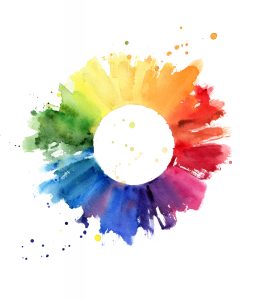There is a wide range of individual components necessary for accurate visual perception. Some of these components include:
- Colour Perception: the ability to discriminate accurately between colours. The person may no longer have a sense of colour. Some people may experience vision in shades of gray. Vision may not seem as clear as before the brain injury. This may affect the ability to select matching clothes, quickly locate the correct food jars in a cupboard, detect visual clues that food that is going off, sort out correct change for a bus fare, identify that a cooker hob is hot, read maps etc.
- Form Constancy: the ability to recognise shapes and objects when they are presented from different angles, distances or they are of different sizes. Problems can include difficulty recognising and picking out common things/people (e.g. a cup stored upside down, a piece of clothing crumpled on the ground and difficulty identifying people from different angles).
- Figure Ground Perception: the ability to focus on and identify a specific item as separate from the background. It includes the ability to filter out irrelevant surrounding items. Difficulties occur when people are unable to identify objects from the surfaces they are on or from other objects which overlap them. Problems may include selecting a knife from a cluttered cutlery drawer, locating a jug on a tray with cups, picking out a shirt placed on a bed.
- Depth Perception: the ability to see or judge how far away something is or how much space there is between objects. Problems with depth perception might impact on a variety of everyday activities e.g. walking up and down stairs, selecting items from a shelf, parking a car. Depth perception is important for constructional ability (e.g. writing, drawing, building things) and topographical ability (i.e. finding our way around).
- Motion Perception: the interpretation of
 movement as it occurs. Perceiving movement accurately can help the person isolate items from the background and can add additional information to help in the judgement of distance. Problems with motion perception can cause difficulties with judging the speed and distance of other people walking in their environment. This may cause the person to experience anxiety and difficulties with regard to a variety of everyday activities e.g. they may be reluctant to walk in crowded places, may struggle to judge traffic speed and cross the road safely, may have difficulty playing sports, may be unable to pour liquid into a cup safely.
movement as it occurs. Perceiving movement accurately can help the person isolate items from the background and can add additional information to help in the judgement of distance. Problems with motion perception can cause difficulties with judging the speed and distance of other people walking in their environment. This may cause the person to experience anxiety and difficulties with regard to a variety of everyday activities e.g. they may be reluctant to walk in crowded places, may struggle to judge traffic speed and cross the road safely, may have difficulty playing sports, may be unable to pour liquid into a cup safely. - Spatial Perception: the ability to judge the size, shape, movement and orientation of objects in space. It involves many of the above components of visual perception and the ability to integrate visual information.
For accurate perception the separate components described above need to be integrated into a whole ‘picture’ e.g:
- Blue colour + slight elongation + rectangular shape + round + black items at corners + becoming larger would be recognised as a car approaching.
- Large + square + soft texture + colour + on a raised, large, flat piece of furniture would be recognised as a blanket.
- Green + oval + small size + smooth + appearing squashable would be recognised as a grape
Visual agnosias are visual perceptual disorders causing the person to lose the ability to identify what they see even though they may be able to describe some of the predominant features. Visual agnosias may include difficulties identifying objects, faces, landmarks, colours, gestures, movement, words, drawings and may affect spatial awareness.
Agnosias can be highly specific e.g. losing the ability to identify faces but retaining the ability to identify objects. Agnosias may occur even in the absence of the specific types of perceptual problems described above e.g. a person may have good colour, depth, shape and size perception but be unable to integrate this information in order to identify familiar faces.